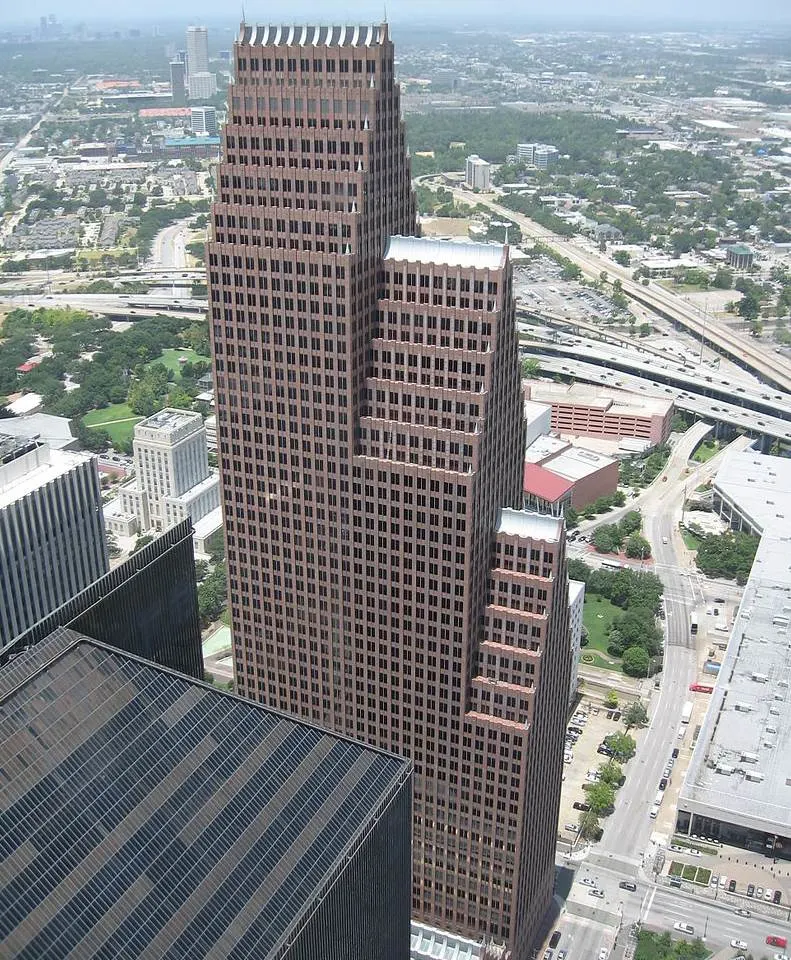When modern architecture emerged in the 1920s and 1930s, not everybody could appreciate the lack of variation and decorative elements.
By the 1960s several renowned architects already expressed the shortcomings of modern architecture, especially those found in International Style buildings.
A couple of architects named Denise Scott Brown (born in 1931) and her husband Robert Venturi (1925-2018) wrote the book “Learning from Las Vegas” in 1972.
This book laid the foundation for Postmodern Architecture, mainly because it accentuated the problem and provided solutions to the shortcomings of modern buildings.
The lack of taking the existing architectural landscape and traditions of the locations into account was the main problem they emphasized.
Although the first postmodern structures emerged in the 1960s, the architectural style didn’t flourish until the 1990s and 1990s.
Below, you’ll discover a list of some of the most famous Postmodern Buildings in the world.
1. Vanna Venturi House – Philadelphia
The Vanna Venturi House and the Guild House are buildings in Philadelphia that are considered to be some of the first examples of Postmodern Architecture. The house is located in the Chestnut Hill neighborhood in the northwestern part of the city and was constructed between 1962 and 1964.
The building was designed by Robert Venturi for his mother Vanna Venturi and he therefore often referred to it as “Mother’s House.” The most remarkable feature of the structure is the monumental façade which makes this 5-bedroom house appear to be much larger than it really is.

2. Petronas Towers – Kuala Lumpur

The Petronas Towers aren’t just some of the most famous Postmodern Buildings in the world, these twin towers are also some of the most iconic skyscrapers ever constructed. They stand 451.9 meters (1,483 feet) tall, a height that made them the tallest buildings in the world between 1998 and 2004.
Designed by Argentine-American architect César Pelli (1926-2019), the buildings incorporate a tub-in-tube design which allows buildings to be constructed much higher. Pelli also incorporated several features related to Malaysia’s Islamic culture, including Islamic motifs on its steel and glass facade.

3. SIS Building – London
The SIS Building is one of the most important buildings in London because it serves as the headquarters of the Secret Intelligence Service (SIS) or MI6. Yes, If James Bond was real, this would be where he receives his orders. The building is located at 85 Albert Embankment in Vauxhall, a district just south of Central London.
The building was completed in 1994 and its design was based on modern industrial buildings that can be found in this area of the city. The structure was designed by renowned British architect Sir Terry Farrell (born in 1938) and is sometimes described as one of the most exuberant examples of Postmodern Architecture.
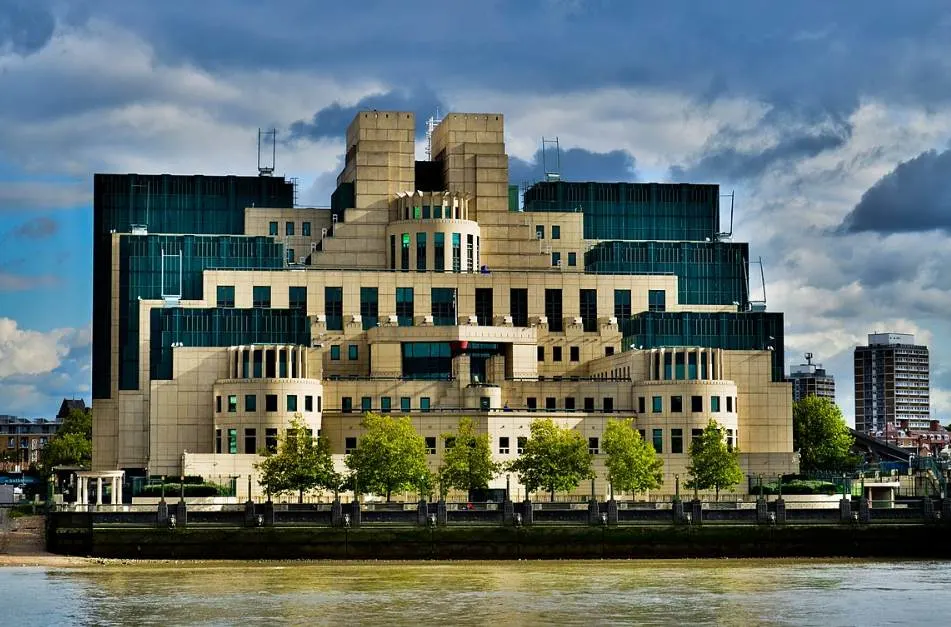
4. Harold Washington Library – Chicago
Harold Washington Library is an amazing building in Chicago that serves as the central library of the public library system in the city. The structure was completed in 1991 and incorporates various elements of historic buildings in the city, including the Rookery, Auditorium, and Monadnock buildings.
The lowest section of the buildings consists of rusticated granite blocks that resemble Renaissance architecture. Red bricks make up the core structure which resembles the Beaux-Arts style. The building was designed with huge green ornamentations that depict figures related to wisdom such as an owl.
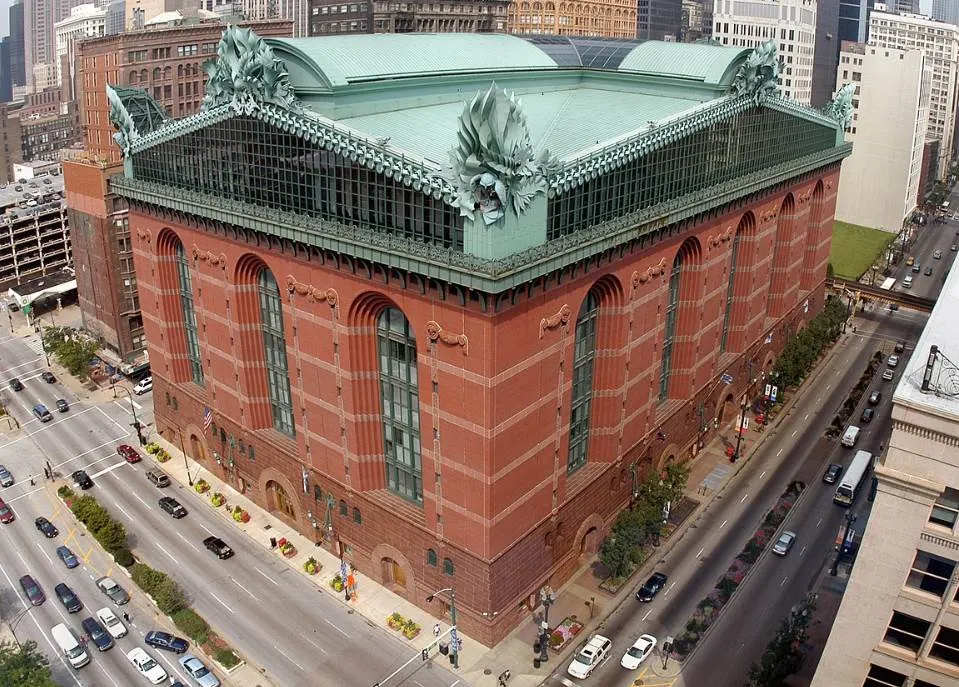
5. 500 Boylston Street – Boston
500 Boylston Street is a huge office tower located in the Back Bay district of Boston, Massachusetts. Although the building in Boston was only completed in 1989, it was part of an extensive urban redevelopment project called the High Spine which emerged in the 1960s.
The historic late-19th century Trinity Church stands right next to it. The building features pink-granite cladding which gives it a remarkable appearance. The structure can be accessed via a courtyard that features two symmetrical columned wings. These elements perfectly blend in with the building’s overall design.

6. PPG Place – Pittsburgh
PPG Place is a complex of 6 different buildings in Pittsburgh, Pennsylvania. It cost $200 million to build the complex between 1981 and 194 which is the equivalent of well over $50 million today. It was commissioned by PPG Industries to serve as the company’s main headquarters.
The most distinctive features of these buildings are the 231 glass spires. The tallest reaches a height of 25 meters (82 feet). These architectural elements along with the reflective insulating glass make this one of the most amazing building complexes in the United States.

7. One Canada Square – London
One Canada Square is one of the many amazing skyscrapers in London that are part of the Canary Wharf complex. This business area is located on the Isle of Dogs in the Tower Hamlets borough of the city. At 235 meters (770 feet), it’s the third-tallest building in the United Kingdom.
It was completed in 1991 and remained the tallest building in the United Kingdom until it was surpassed by The Shard in 2004. It’s another project in which renowned architect César Pelli was involved. He designed the massive skyscraper in such a way that it slightly resembles the iconic Big Ben Tower.
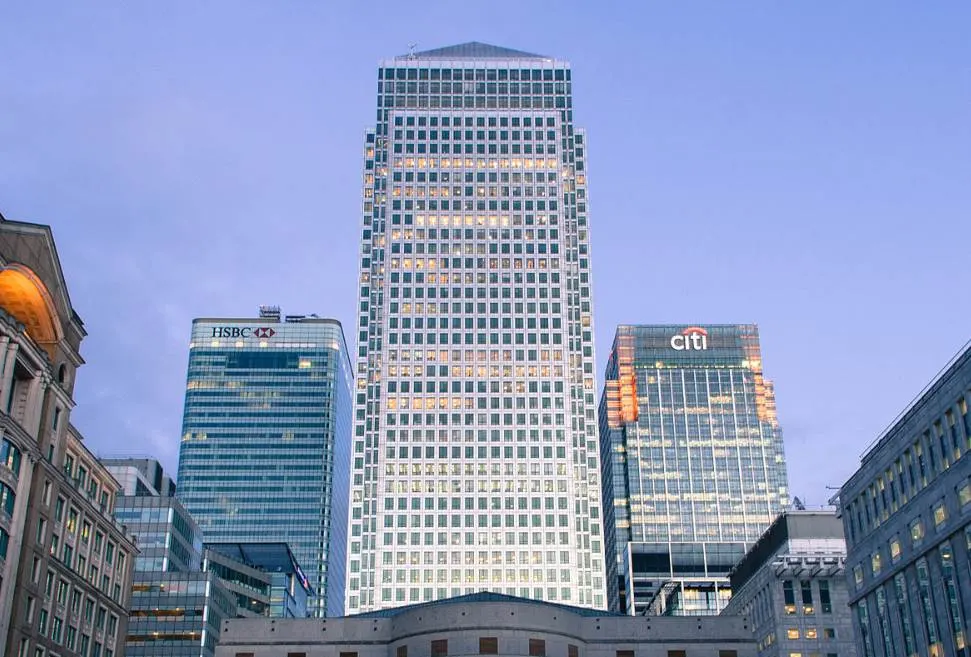
8. Messeturm – Frankfurt
The Messeturm is also referred to as the Trade Fair Tower and is one of the most iconic skyscrapers in Frankfurt, the most populous city in the German state of Hesse. It stands majestically in the Westend-Süd district and reaches a height of 257 meters (843 feet) above ground level.
The building was constructed between 1988 and 1990 and it was the tallest building in Europe until 1997. It was completed by the equally amazing Commerzbank Tower which is located just near to the east. The design of the tower is remarkable for integrating multiple geometric shapes.

9. Amoreiras Towers – Lisbon
The Amoreiras Towers is the name of a Postmodern Building complex located in Campo de Ourique, a district of Lisbon situated just northeast of the historical heart of the city. It consists of multiple distinctive examples of Postmodern Architecture, including 3 amazing office towers.
The buildings were completed between 1980 and 1987 and the three office towers are adjoined by various residential buildings and a shopping mall. The complex was constructed don’t eh former Amoreiras Station, storage space for trams and busses that operated in the city.
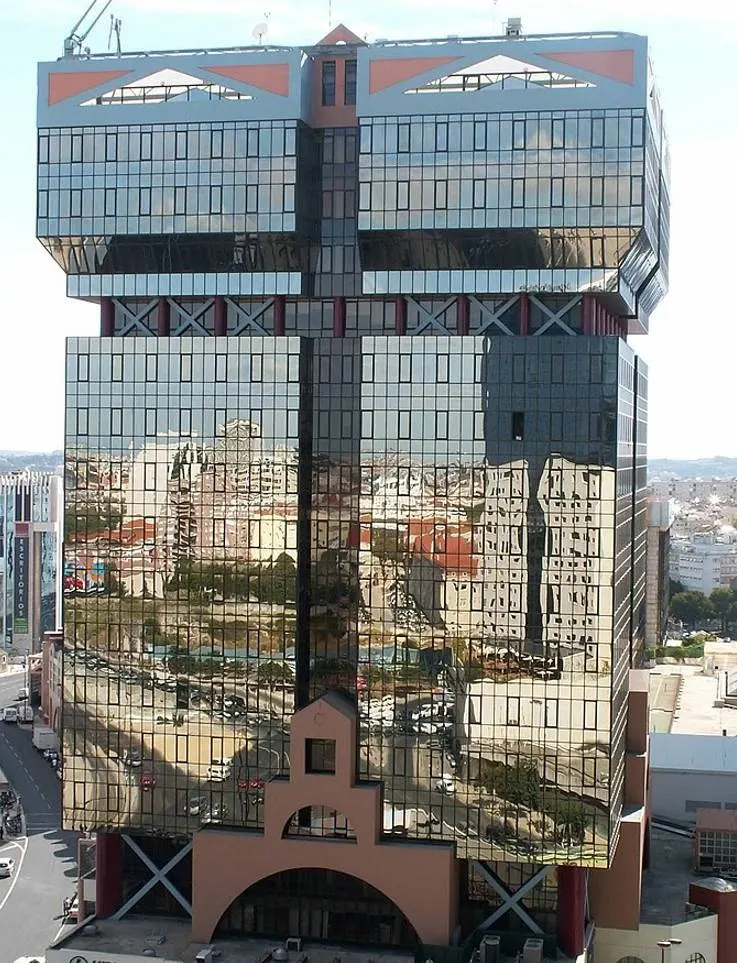
10. TC Energy Center – Houston
TC Energy Center is the name of a building that has gone by a wide variety of names throughout its history. Some of these include the NCNB Center, NationsBank Center, and the Bank of America Center. This building in Houston was the first prominent example of Postmodern Architecture in the downtown area of the city.
The huge building was completed in 1983 and was designed by American architects Philip Johnson and John Burgee. The building was designed in such a way that it resembles the Gothic architecture of townhouses that can be found in cities in the Netherlands. It features 3 setbacks that each resemble the roofline of such houses.
